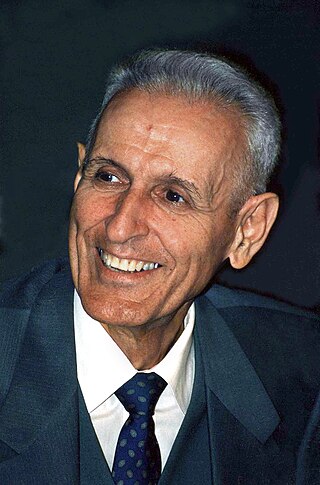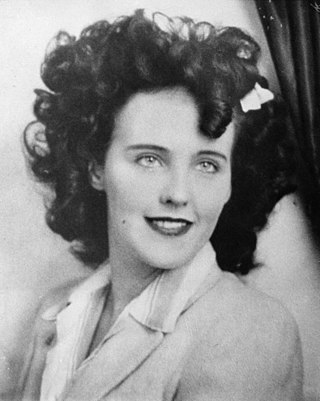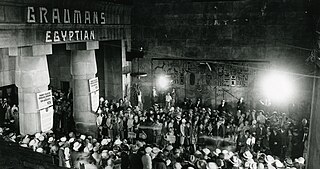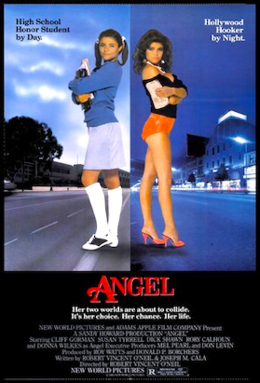
Hollywood, sometimes informally called Tinseltown, is a neighborhood in the central region of Los Angeles County, California, mostly within the city of Los Angeles. Its name has come to be a shorthand reference for the U.S. film industry and the people associated with it. Many notable film studios, such as Sony Pictures, Walt Disney Studios, Paramount Pictures, Warner Bros. and Universal Pictures, are located in or near Hollywood.

Murad Jacob "Jack" Kevorkian was an American pathologist and euthanasia proponent. He publicly championed a terminal patient's right to die by physician-assisted suicide, embodied in his quote, "Dying is not a crime". Kevorkian said that he assisted at least 130 patients to that end. He was convicted of murder in 1999 and was often portrayed in the media with the name of "Dr. Death".

Lee Earle "James" Ellroy is an American crime fiction writer and essayist. Ellroy has become known for a telegrammatic prose style in his most recent work, wherein he frequently omits connecting words and uses only short, staccato sentences, and in particular for the novels The Black Dahlia (1987) and L.A. Confidential (1990).

San Quentin Rehabilitation Center (SQ), formerly known as San Quentin State Prison, is a California Department of Corrections and Rehabilitation state prison for men, located north of San Francisco in the unincorporated place of San Quentin in Marin County.

Elizabeth Short, known as the Black Dahlia, was an American woman found murdered in the Leimert Park neighborhood of Los Angeles, California, on January 15, 1947. Her case became highly publicized owing to the gruesome nature of the crime, which included the mutilation of her corpse, which was bisected at the waist.

Grauman's Egyptian Theatre, also known as Egyptian Hollywood and the Egyptian, is a historic movie theater located on Hollywood Boulevard in Hollywood, Los Angeles, California. Opened in 1922, it is an early example of a lavish movie palace and is noted as having been the site of the world's first film premiere.
Answer Me! was a magazine edited by Jim Goad and Debbie Goad and published between 1991 and 1994. It focused on the social pathologies of interest to the Los Angeles–based couple.

Hollywood Boulevard is a major east–west street in Los Angeles, California. It runs through the Hollywood, East Hollywood, Little Armenia, Thai Town, and Los Feliz districts. Its western terminus is at Sunset Plaza Drive in the Hollywood Hills and its eastern terminus is at Sunset Boulevard in Los Feliz. Hollywood Boulevard is famous for running through the tourist areas in central Hollywood, including attractions such as the Hollywood Walk of Fame and the Ovation Hollywood shopping and entertainment complex.

John "Jonathan" Gilmore was an American author and gonzo journalist known for iconoclastic Hollywood memoirs, true crime literature and hard-boiled fiction.

Black Sunday is a 1975 novel by American writer Thomas Harris.

Angel is a 1984 American exploitation thriller film directed by Robert Vincent O'Neil, written by O'Neil and Joseph Michael Cala, and starring Donna Wilkes, Cliff Gorman, Susan Tyrrell, Dick Shawn, and Rory Calhoun. Its plot follows a teenage prostitute in Los Angeles who faces danger when a serial killer begins stalking and murdering young prostitutes.
Many Black Dahlia suspects, or persons of interest, have been proposed as the unidentified killer of Elizabeth Short, nicknamed the "Black Dahlia", who was murdered in 1947. Many conspiracy theories have been advanced, but none have been found to be completely persuasive by experts, and some are not taken seriously at all.
A euthanasia device is a machine engineered to allow an individual to die quickly with minimal pain. The most common devices are those designed to help terminally ill people die by voluntary euthanasia or assisted suicide without prolonged pain. They may be operated by a second party, such as a physician, or by the person wishing to die. There is an ongoing debate on the ethics of euthanasia and the use of euthanasia devices.

You Don't Know Jack is a 2010 American made-for-television biopic written by Adam Mazer and directed by Barry Levinson. It stars Al Pacino, John Goodman, Danny Huston, Susan Sarandon, and Brenda Vaccaro.

Michael Thomas Gargiulo is a convicted American serial killer. He moved to Southern California in the 1990s and gained the nickname The Hollywood Ripper. He was convicted of two counts of first-degree murder and sentenced to death on July 16, 2021. As of April 2023, he was incarcerated in the California Health Care Facility; in September 2024, he was extradited to Cook County, Illinois, to face trial for a 1993 murder.

George Hill Hodel Jr. was an American physician, and a suspect in the murder of Elizabeth Short, the Black Dahlia. He was never formally charged with the crime but, at the time, police considered him a viable suspect, and two of his children believe he was guilty. He was also accused of raping his daughter, Tamar Hodel, but was acquitted of that crime. He lived overseas several times, primarily in the Philippines between 1950 and 1990.
Juan Chavez was a Mexican serial killer who, between 1986 and 1990, killed at least six gay men in three cities in Los Angeles County, California. On June 21, 1999, he was sentenced to five consecutive life sentences without the possibility of parole, but he committed suicide by hanging himself at Folsom State Prison just two months later.

















